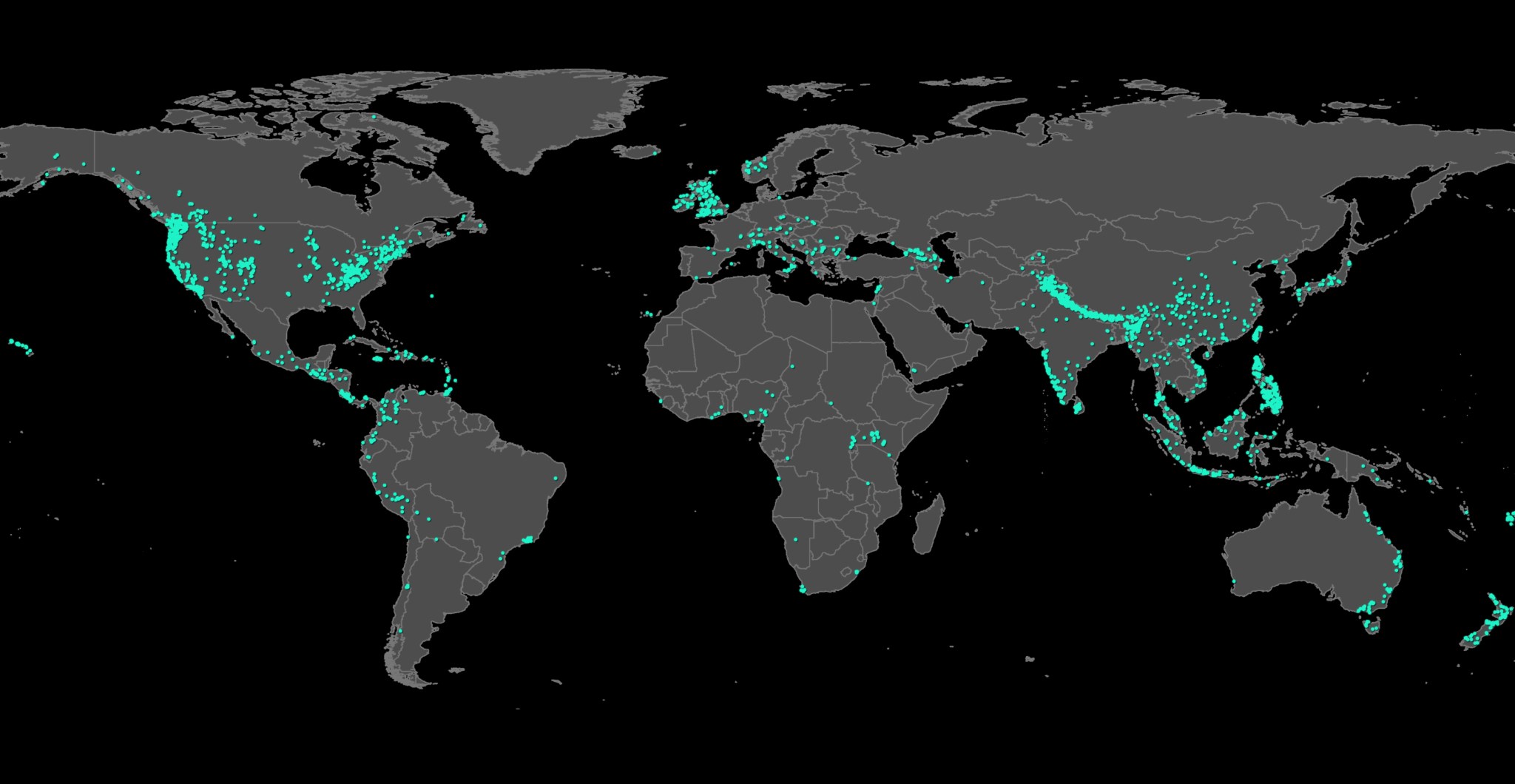As farmers in Nepal prepare for a fruitful monsoon season, NASA scientist Dalia Kirschbaum anticipates a different impact of the torrential rains— the loosening of earth on steep slopes that lead to landslides.
Kirschbaum oversees a team of scientists who are using data from NASA satellites to design an automated system to quickly identify landslides that often go undetected and unreported. The system scans satellite imagery for signs that a landslide may have occurred very recently. The software is now open source and available to the public.

“We know a high number of landslides occur around this time in Nepal so documenting them is really important, especially to better characterize when these events happen and what impact they have,” said Kirschbaum, a landslide expert at NASA’s Goddard Space Flight Center in Greenbelt, Maryland.
In Nepal, 60 to 80 percent of the annual total precipitation occurs during the monsoon season— as do about 90 percent of landslide fatalities, according to a 2015 report from the United Nations Office for the Coordination of Humanitarian Affairs.
“We’re interested in rapidly and precisely identifying unreported landslides to better understand landslide triggering conditions. This information can improve maps that show which areas are susceptible to landslides, and promote responsible management of resources,” said Aakash Ahamed, who worked on the project at Goddard as part of the NASA DEVELOP Program under NASA’s Applied Sciences Program.
The Sudden Landslide Identification Product, or SLIP, combs through Earth imagery taken from the Landsat 8 satellite, a joint mission by NASA and the U.S. Geological Survey. SLIP analyzes consecutive images of the same location for changes soil moisture and other characteristics, such as muddiness, to identify locations where landslides may have occurred. To mask out areas where false positives could be inadvertently detected, the software also uses topographic information such as hill slope derived from the Shuttle Radar Topography Mission (SRTM) and the Advanced Spaceborne Thermal Emissions and Reflection Radiometer (ASTER) elevation models.

In this way, SLIP is poised to automatically pinpoint the locations of possible landslides with every new image from Landsat 8. What the team can’t determine from these images alone though, is when the landslides occurred, due to the 16-day gap between consecutive Landsat 8 images of the same spot on Earth. Most landslides happen over the course of minutes, not weeks.
To more precisely match a date to each landslide detected through SLIP, the team uses another set of satellite data—precipitation measurements from the Global Precipitation Measurement, or GPM, mission constellation of satellites. The GPM core satellite measures rain and snow around the world every three hours. Using these satellite data, scientists created maps showing rain accumulation over 24, 48, and 72 hour periods for the areas of interest, creating a product called Detecting Real-time Increased Precipitation, or DRIP. When a certain amount of rain has fallen in a region, an email with the precipitation levels can be sent out to interested parties, such as emergency responders.
Together, these two products create a powerful tool for identifying both the date and location of landslides. When SLIP flags a potential landslide, DRIP searches through the corresponding 16 days and chooses the date with maximum rain accumulation as the presumed time of the landslide.
For the past several years, Kirschbaum has been collaborating with the International Centre for Integrated Mountain Development (ICIMOD) to overcome challenges of inventorying landslides and mapping hazard-prone areas. ICIMOD hosts SERVIR-Himalaya, a joint program between NASA and the U.S. Agency for International Development to help countries use information provided by Earth observing satellites and geospatial technologies. The SLIP-DRIP information could significantly improve landslide inventories, leading to better landslide risk management.
Currently, SLIP and DRIP models are still in the testing phase, but this information will ultimately be fed into NASA’s Global Landslide Catalog—the first and only global rainfall-triggered landslide database accessible to emergency response teams, researchers and the public.
The SLIP-DRIP products will provide more current and comprehensive landslide entries to the Global Landslide Catalog. At the moment, the catalog only includes landslides that were reported in news outlets, online journals and disaster databases, which are not comprehensive.

“While the Global Landslide Catalog has already provided some really interesting insight into where and when landslides are occurring, being able to capture information from satellite-based sources provides a potentially more robust way of figuring out the true frequency and impact landslides can have,” said Kirschbaum, a member of the SERVIR Applied Sciences Team. She also hopes to include citizen science reports of landslides in the catalog as a way to learn about new landslides and validate reported landslides from the SLIP-DRIP products.
The SLIP-DRIP products could also help with predicting landslides, said Ahamed. Scientists can learn how much precipitation it takes to cause a landslide for a certain slope or a certain soil type or how landslide occurrences change during events such as El Niño.
“Most landslides in remote areas go unreported,” said Ahamed. “By detecting these landslides and the conditions that cause them, we hope to improve our ability to predict where and when landslides may occur.”
Other contributors to this DEVELOP project include Justin Roberts-Pierel, Jessica Fayne, and Amanda Rumsey and scientists from ICIMOD.
To access the SLIP-DRIP software, visit https://github.com/NASA-DEVELOP/DRIP-SLIP
Related links:




























